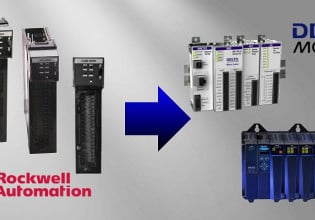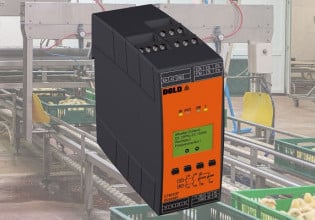Red Lion Expands FlexEdge With New Strain Gauge and Com Modules
Red Lion has added a new series of strain gauge modules to their FlexEdge intelligent edge automation platform, along with two ‘sleds’ allowing connection to CAN and J1939 automotive networks.
Red Lion’s newest strain gauge module provides a means for collecting and using strain data for making process control decisions. Strain can be used to calculate pressure, fill level (liquid or solids), applied forces, and other such properties that are of importance to automation systems.
Strain Gauge Applications
Strain gauges are commonly used in equipment monitoring applications. They collect data about the health of devices and can lead to “notify before failure” conditions that improve the safety and reliability of industrial equipment. As an example, the oil and gas industry uses networks of strain gauges to ensure that their pipelines, pressure vessels, storage tanks, and other such equipment are in good health. If the strain increases above known averages, it is a good indicator that the component is near the end of its service life and should be replaced.
Without strain gauges, manual inspections must be performed. These are time-consuming and often require the equipment to be shut down. Without manual inspections, pipelines start to leak and pressure vessels may burst, causing loss of containment, injury, and damage.
Besides equipment health monitoring, strain gauges can be used in automation systems to determine loading, applied forces, and other such measurements required for robotic handling of materials. They can also be used in pressure gauges, level sensors for solid or liquid materials, and numerous other applications.
Automotive Industry Com Protocols
Two other additions to the FlexEdge lineup include add-in modular communication support for two common automotive industry protocols. The CAN (controller area network) protocol is used within many industrial applications, but the J1939 protocol is a specific implementation of the CAN physical layer, specialized for use in ag equipment, trucks, and buses.
These communication ‘sleds’ fit into slots on the FlexEdge controller modules, with various CPUs allowing between 1-3 sleds, making them a more appropriate fit for various applications.

FlexEdge controller with several modules. This controller (on the left) has 3x ‘sleds’ mounted to its configuration. Image used courtesy of Red Lion
Red Lion FlexEdge Automation Platform
The FlexEdge automation platform is one of Red Lion’s product offerings for process control, specifically designed to give access and insight into process data between various systems.
FlexEdge consists of a controller and various I/O modules depending on the specific application, much like an industrial PLC system. The modules can be expanded or changed, making the platform versatile and scalable for numerous applications, meaning the same system can be used later when design needs have changed. The FlexEdge system also accepts components from some third-party vendors, which helps lower the barrier to entry for switching or expanding an existing automation system.
The newest strain gauge modules can drive up to 4x 350 W torque bridge transducers, using a single PID loop to measure, monitor, and control systems based on the data. Depending on the model, output can go to a solid-state relay or to a mechanical relay, which can be used to open valves, turn on pumps, etc.
Many of the settings for these modules can be set in software, such as determining the input signal range (up to 200 mV), which influences both the types of sensors that can be used as well as the resolution of the data.
Bottom Line for Industrial Data
Strain gauges have plenty of applications in manufacturing and industry. The FlexEdge automation system by Red Lion can now be used to interface multiple strain gauges and make process control decisions based on the data. Ultimately, this will improve the safety and reliability of health monitoring applications. It will also reduce scrap/rework/shrink of manufactured goods that are handled robotically.






